Your Cart is Empty
Get Up To 35% OFF & Free Delivery
Get Up To 35% OFF & Free Delivery
Get Up To 35% OFF & Free Delivery


Teaching your dog to “roll over” on demand is one of those fun tricks you always envision when you think about training your young pup. It looks impressive and, once it's been mastered, it's one that you and your four-legged friend will enjoy doing together, time and time again.
If we class ‘paw’ and ‘sit’ as some of the easier training commands, learning to roll over would probably fall somewhere in the middle in terms of difficulty. Not every puppy finds it easy, and it is not the most intuitive of commands to teach, so read our guide to discover a fool proof teaching method.
When Should You Start Teaching Your Dog to Roll Over?
What Are the Benefits of Teaching “Roll Over”?
How to Teach Your Dog to Roll Over: Step-by-Step Instructions
Common Reasons Dogs Resist the Trick
How to Troubleshoot and Adjust
Breeds That May Find It Harder (And How to Adapt)
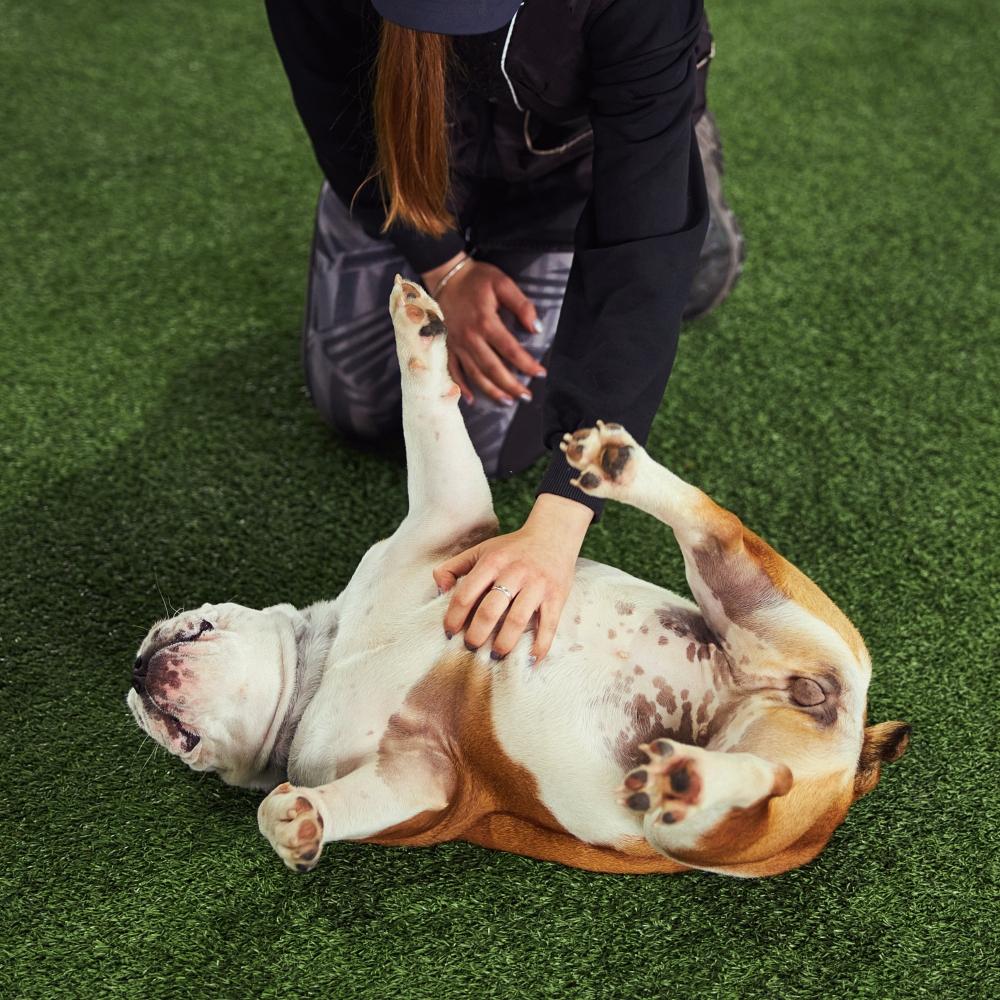
Choosing the right time to teach a trick is half the battle. Start too early and your pup won’t play ball, try too late and you could find it takes longer for your adult dog to learn.
You can start ‘trick’ or ‘command’ training once your puppy comes home at about eight weeks of age. Before this, they’re not developmentally ready. Roll over can be difficult for some puppies to grasp, so make sure you’ve got more basic tricks (like ‘sit’ and ‘lie’) learned first.
Absolutely, despite the old idiom ‘You can’t teach an old dog new tricks’, ‘Roll over’ can be taught at any age. Younger dogs take to training a lot better and an older dog is going to take longer to learn a new concept.
I’d avoid training your dog to roll over if they’re very senior or have any known medical issues such as osteoarthritis or back bone degeneration. If they’ve had a history of bloat, GDV or IVDD, this is not a trick for them.
If your dog is ready to learn, they’re going to be eager and active participants in their training sessions. Though they may not always get things right, they should try hard.
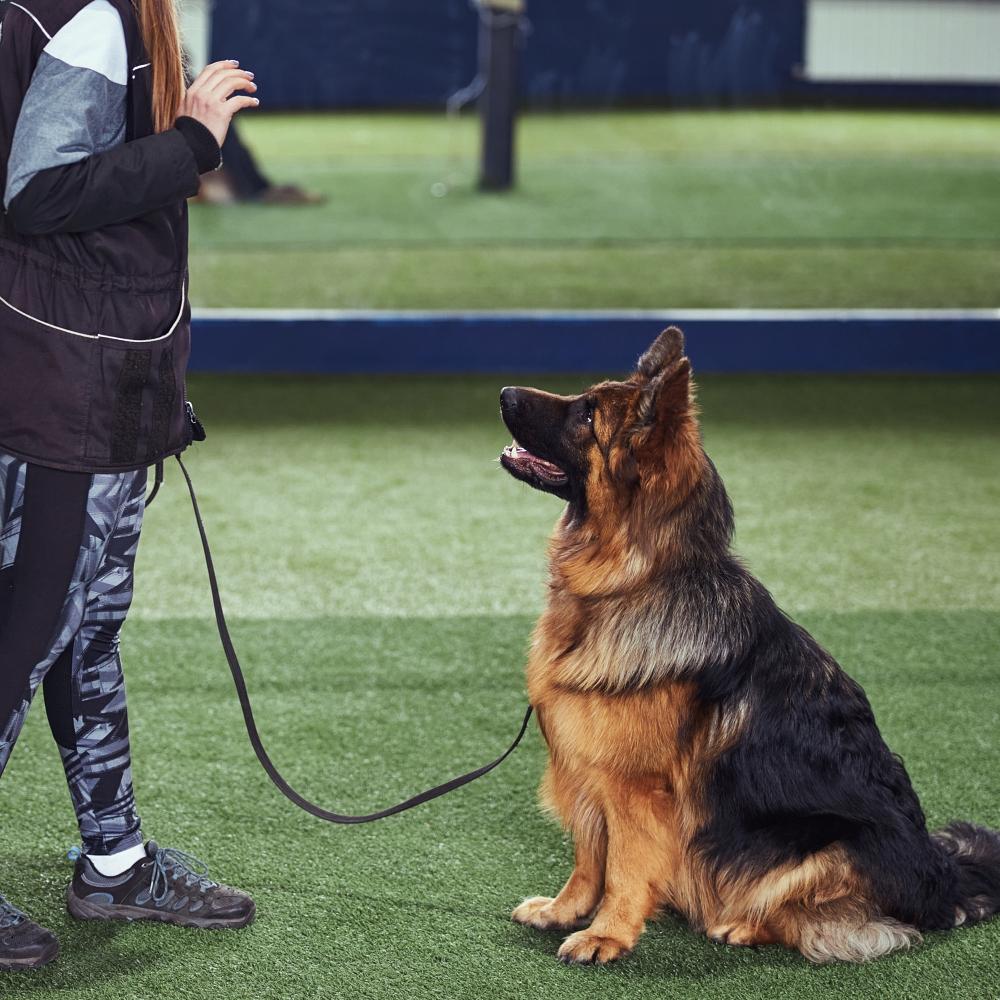
Teaching your dog to roll over is not just about having an impressive party trick to show your friends and family. There are some surprising benefits you may not have considered.
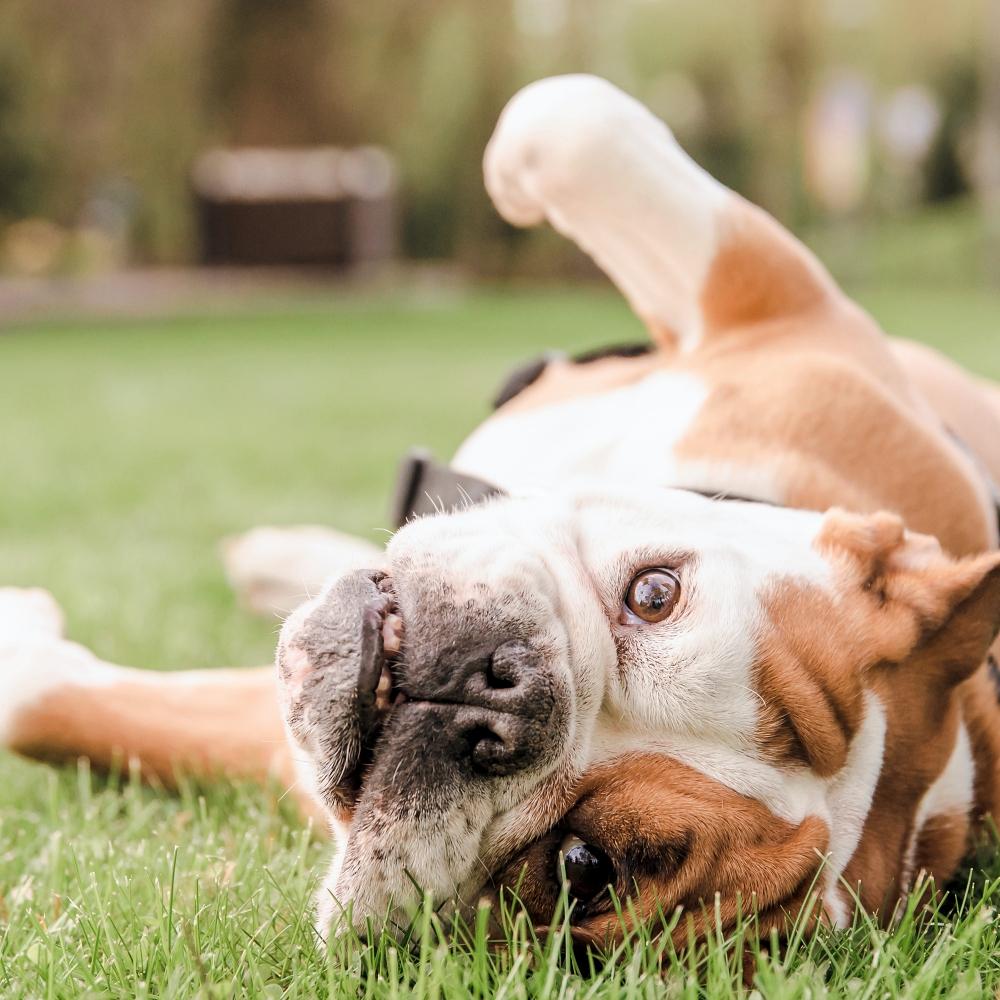
Training your dog to roll over:
Strengthens the bond between dog and owner
Encourages body awareness and flexibility
Provides mental stimulation
Great for active playtime and obedience foundation
A building block for more complex commands such as ‘play dead’, or for canine dancing
You may be eager to jump right into the training session, but you’ll need to set things up first, to ensure you’re getting the most out of your training block.
As mentioned, you’ll need to make sure your puppy has got a good understanding of the ‘sit’ and ‘lie’ commands, as outlined here:
You’ll also want a large supply of training treats that are easily accessible, such as in a training pouch attached to you. These should be small morsels of very ‘high value’ foods such as chicken, sausage, or beef jerky. Something like kibble or biscuits won’t cut it for a more complex training session like this.
Situate you and your pet in a quiet, distraction-free space and schedule it for a time when your puppy is not over-tired or over-excited. Similarly, make sure you’re in the right frame of mind; feeling calm and patient, with time to spare.
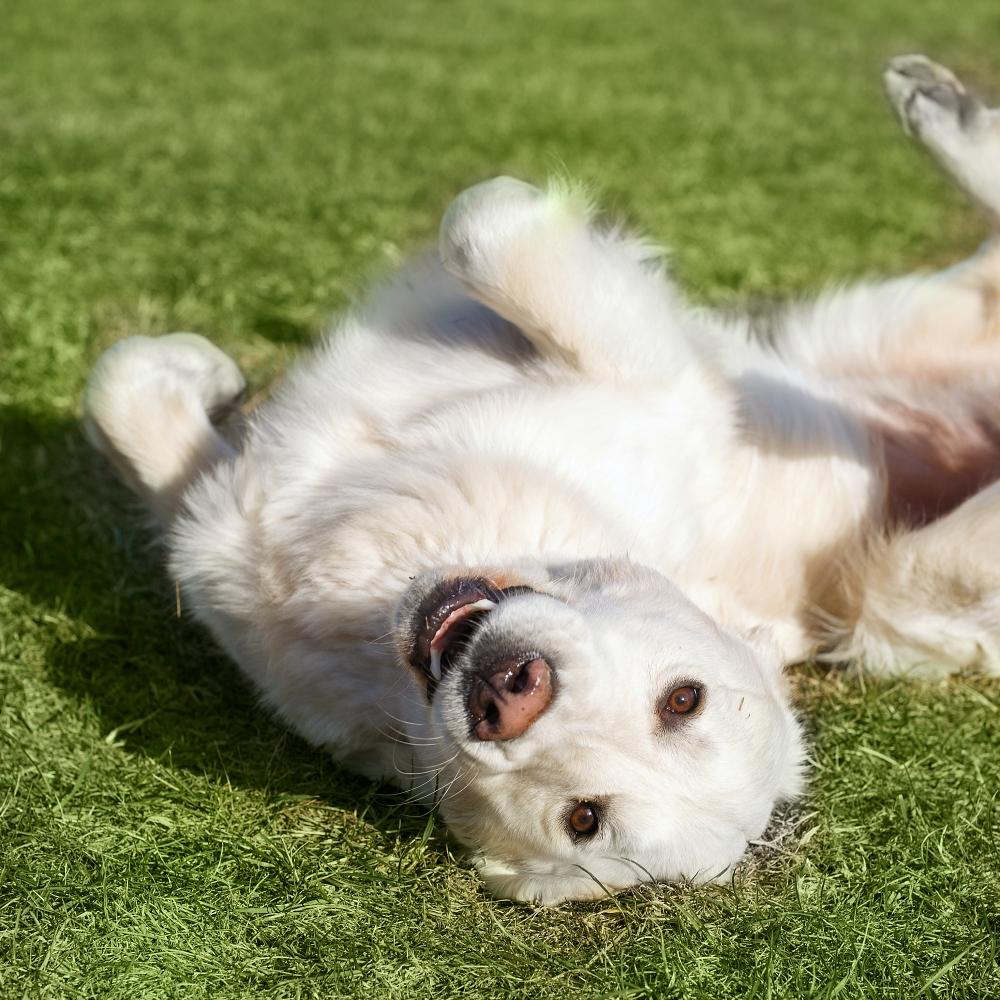
Take a look at these simple steps, before diving in.

If you’ve already nailed the ‘lie’ command, this should be a piece of cake. In the early stages of training, you should continue to reward them when they lie down. Importantly, at this point, you’re not using the verbal command ‘Roll Over!’ just yet’.
Once they’re lying down, you want them to roll to either side. Some puppies dislike being put off balance like this and may need a little encouragement from you (with a nudge!), as they learn. Hold the treat very close to their nose, so they’re able to sniff as you lure them.
Once they’ve rolled (which may be by mistake the first few times) you make a huge fuss of them. If you’re clicker training, you’d click and reward them immediately. If not clicker training, you use a praise word like ‘Yes!’ and immediately follow up with a treat.
Once your dog is reliably rolling over, you then add the ‘Roll over!’ command. This forms the link in their brain between the action and the phrase. As time goes on and you practice more, they’ll feel the urge to roll as soon as they hear that phrase.
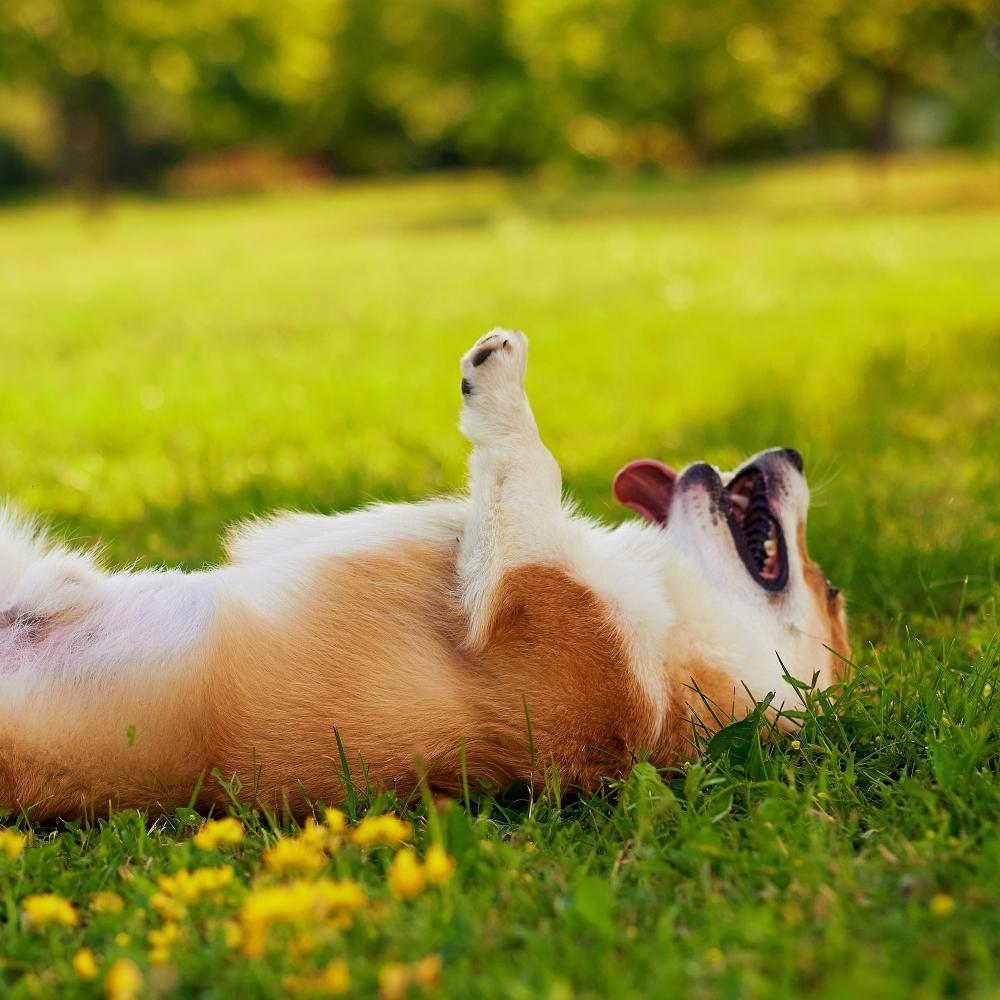

Repetition is key when it comes to puppy learning, especially for obedience training .Try to do a few five minute sessions every day.
If you can, vary what you do in each session, to avoid it becoming boring and predictable. It is also a good idea to ask for these varying commands in different orders, and to have your dog lying before a roll on some occasions, or going from standing to a roll on others.
For extra bonus points, mix it up and have some sessions outside in the garden, or in different parts of the home. You’ll want to avoid ending up with a puppy who can do all sorts of basic commands, but only when in the kitchen!
The most important thing when it comes to cheese feeding is to only offer it in moderation, and to monitor for any reactions. If your dog does seem to develop symptoms after they eat cheese (such as loose stools), it is best to avoid it; sometimes, you’ve got to be the one making the hard decisions in the relationship!

It is not always a natural movement for puppies or dogs and some resent us physically pushing or rolling them, getting frustrated during their training sessions. This sort of manoeuvre requires real flexibility and core strength; something not all canines have got.

Another consideration is that you are demanding your pet put themselves in a vulnerable position, with their belly exposed. If they’re anxious, this can be a huge deal for them, and they may not be keen on complying if you’ve not yet reached that level of trust in your relationship.
Finally, dogs may refuse to obey if they don’t feel motivated to do so. This could be if they’re too tired to join in, if they’re in a stressful environment, or if the treats on offer are not appealing to them.
Work on building your bond with your puppy, with lots of positive reinforcement, gentle praise, and by spending time together.
It is a great idea to carry out the training session on a softer surface, such as a carpeted floor or grass.
Ensure you’re working with some ‘high end’ treats on this task. It can be a good idea to try a few different options, to see which get your pet most excited.
This is an especially tricky movement for the more barrel-chested dogs such as the Bulldog, Boxer or German Shepherd. It can actually be a little uncomfortable for these guys to roll over, particularly on harder grounds.
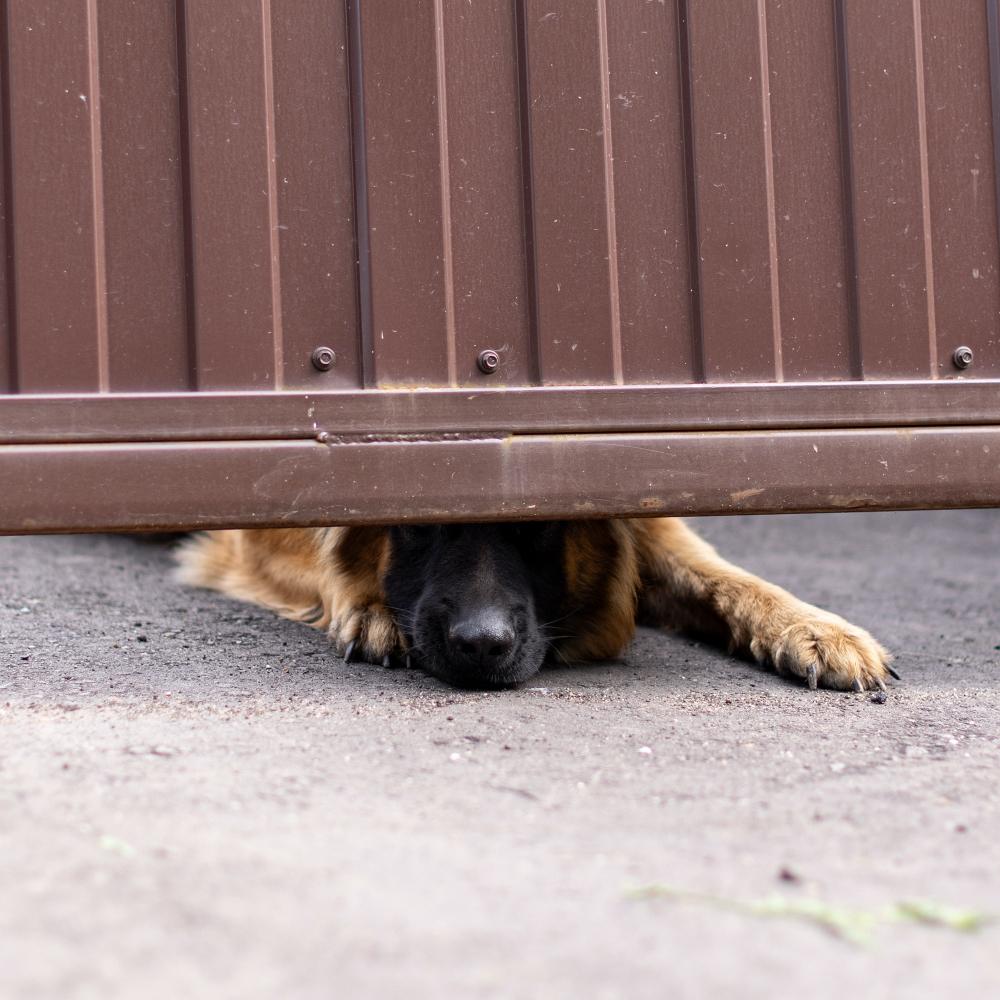
You can troubleshoot this by only practicing on softer surfaces. These dogs may need a little extra guidance and patience, so try not to rush it. For some, waiting until they’re a few weeks older can make the world of difference.

Some of the best tips I’ve collected along the way, that help ensure the highest success rate include:
Keep training sessions short and fun. Aim for about five minutes in a young pup, and no longer than ten.
Use positive reinforcement. You’re not going to get very far if you’ve not got a good reward on offer. Lots of praise, tickles, pets, and treats are needed for results that are repeatable
Don’t rush the trick — let your dog go at their pace. If they’re not getting it or becoming frustrated, move on to something they are good at. Then, try again later, once they’re feeling happier.
Always end on a successful moment. If your pup hasn’t mastered rolling over, end the session by asking for ‘paw’ or a ‘sit’ and then give lots of rewards. This helps prevent them from making any negative associations with their training.
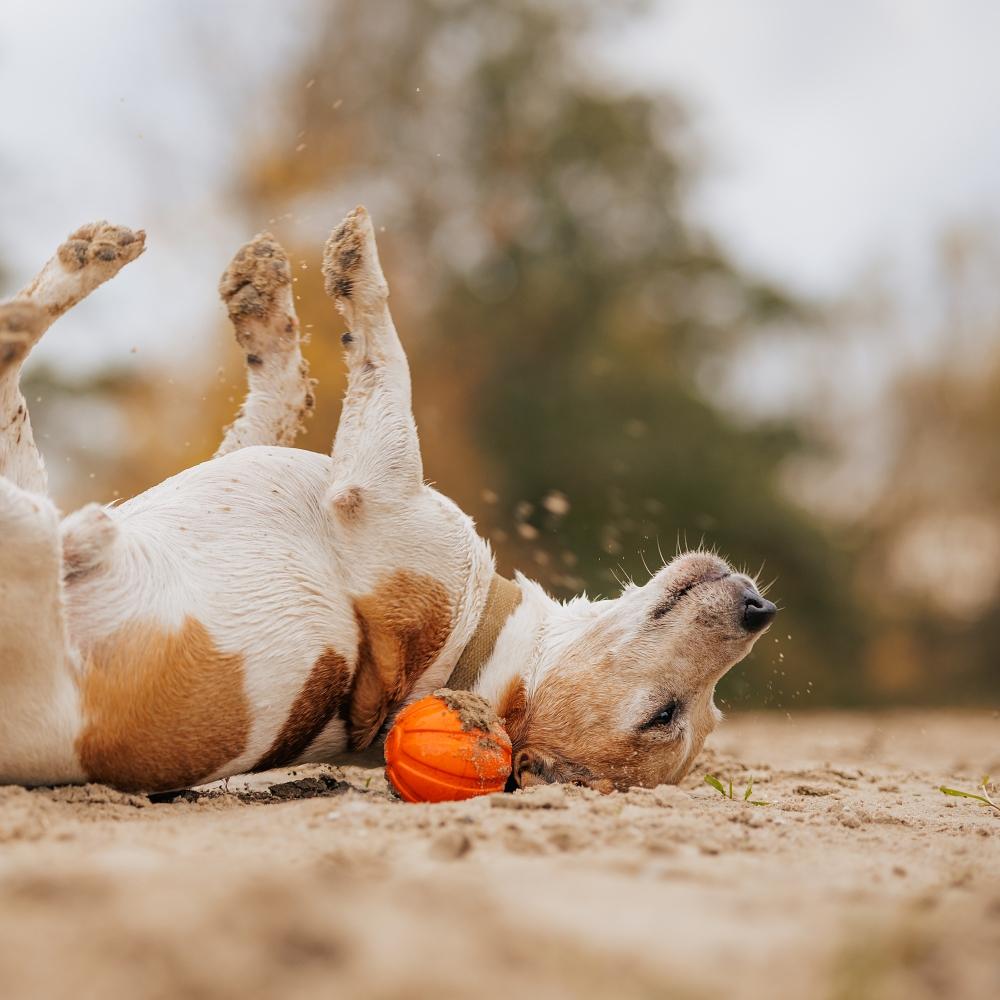
In healthy dogs, rolling over is a normal and natural movement and asking them to roll over should not cause any harm.
I’ve heard some owners mention their concern for causing the stomach to twist in deep-chested dogs, but this is highly unlikely. Still, it is sensible for giant breeds or those prone to bloat (like German Shepherds and Basset Hounds) to hold off on training right after a meal.
Of course, if your dog is coping with an injury or has a history of an orthopaedic issue such as a slipped disc, this is a trick best avoided.
See How Dog Owners Are Using These Leak-Free Potty Pads to Keep Their Homes Clean and Pups Happy
4.7 ⭐⭐⭐⭐⭐
Over 100,000 Dog Owners Saved Money With Potty Buddy™
The washable pee pads that absorb anything your dog throws at them, while keeping your floors and furniture stain-free.
✅ Super Absorbent and Leak-Proof
✅ Great for Potty Training
✅ Ideal for Puppies and Older Dogs
✅ Washable and Reusable For Years
✅ Save over $400/year by not buying disposables
-60 Day Money Back Guarantee-

⭐⭐⭐⭐⭐
-Diana D.
These pads are a life saver for my kitchen floor and bedroom carpet! Just ordered 2 more!




So, now you know how to teach a dog to roll over! Teaching your pet to roll over is not difficult, it just takes a little forward planning, time and patience. Most dogs will have this fun trick mastered in just a few weeks, and find it a command that’s fun to do!
Have fun, be consistent, and your furry friend will be rolling over in no time.
Follow Us On
Check Out Our Most Popular Content